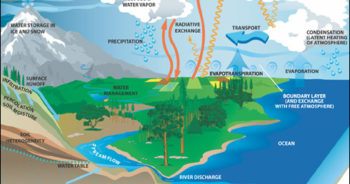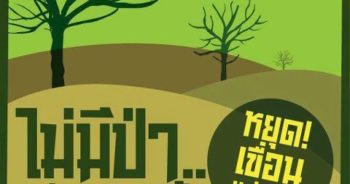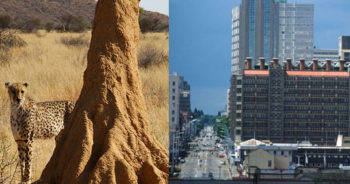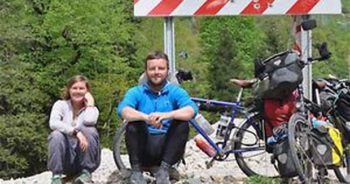สรณรัชฎ์ กาญจนะวณิชย์
เราพูดกันมานานแล้วถึงความสำคัญของความหลากหลายทางชีวภาพ ไม่ใช่เฉพาะความสำคัญเชิงพาณิชย์ เช่น เป็นแหล่งพัฒนายารักษาโรค ฯลฯ แต่พูดถึงความสัมพันธ์ของมันกับประสิทธิภาพของระบบนิเวศ และพูดถึงความสำคัญในการอนุรักษ์สัตว์ผู้ล่าขนาดใหญ่บนยอดระบบพีระมิดอาหาร เพราะชีวิตของมันมีความเชื่อมโยงครอบคลุมกับชีวิตอื่นๆ ในระบบ รักษามันไว้ได้ ชีวิตอื่นๆ ก็รอดด้วย
พูดกันจนฟังเหมือนโพยสำเร็จรูปที่นักนิเวศวิทยาร่ายต่อๆ กันมา แต่ในช่วง 20 ปีที่ผ่านมานี้ เรามีหลักฐานจากงานวิจัยและงานอนุรักษ์สะสมเป็นจำนวนมาก จนสามารถถักทอต่อกันเป็นเรื่องราวทรงพลัง พิสูจน์ทฤษฎีนิเวศวิทยา พิสูจน์ความซับซ้อน และเผยให้เราแง้มเห็นสัจธรรมของทฤษฎีกาย่า (Gaia) ว่าชีวิตทั้งปวงบนโลกปฏิสัมพันธ์ร่วมกันกับโลกเพื่อสร้างภาวะที่เอื้อต่อการดำรงชีวิต
นิทานที่เจ๋งมากเรื่องหนึ่งคือเรื่องราวที่เกิดขึ้นในอุทยานแห่งชาติเยลโลว์สโตน เมื่อเดือนก.พ. 2557 Sustainable Man ได้จัดทำวิดีโอความยาวเพียง 4 นาทีเศษประกอบการบรรยายของ George Monbiot นักเขียนสิ่งแวดล้อมชื่อดังบนเวที TED Talk เพื่อเผยแพร่เรื่องราวมหัศจรรย์เรื่องนี้ ให้ชื่อชวนติดตามว่า “How Wolves Change Rivers” หรือ “หมาป่าเปลี่ยนแม่น้ำได้อย่างไร”
เรื่องนี้ไม่ดูไม่ได้ ขอบอก
ผู้เขียนได้ถอดเทปและแปลคำบรรยายวิดีโอเป็นภาษาไทย ขออภัยที่ไม่รู้วิธีทำเป็น subtitle ติดบนวิดีโอ
หมาป่าเปลี่ยนแม่น้ำได้อย่างไร
โดย จอร์จ มอนบิออท์
การค้นพบทางวิทยาศาสตร์ที่น่าตื่นเต้นที่สุดเรื่องหนึ่งในช่วงครึ่งศตวรรษที่ผ่านมา ได้แก่ ปรากฏการณ์ “น้ำตกห่วงโซ่อาหาร” ในพื้นที่ต่างๆ มากมายหลายแห่ง “น้ำตกห่วงโซ่อาหาร” หรือ trophic cascade คือกระบวนการทางนิเวศวิทยาที่เกิดขึ้นบนยอดพีระมิดอาหาร แล้วส่งผลพวงกลิ้งตกลงมาถึงเบื้องล่าง ตัวอย่างคลาสสิกได้แก่กรณีอุทยานแห่งชาติเยลโลว์สโตน สหรัฐอเมริกา เมื่อมีการปล่อยหมาป่าคืนสู่ระบบนิเวศในปี พ.ศ. 2538
เราทุกคนรู้ว่าหมาป่าฆ่าสัตว์หลายชนิด แต่บางทีเราอาจจะไม่ค่อยตระหนักว่าพวกมันยังให้ชีวิตแก่ผู้อื่นเช่นกัน
ก่อนที่นักอนุรักษ์จะคืนหมาป่ากลับสู่เยลโลว์สโตน พวกมันได้ถูกมนุษย์ล่าหายไปจากพื้นที่นี้เป็นเวลายาวนานถึง 70 ปี จนประชากรกวางในอุทยานฯ เพิ่มสูงขึ้นๆ เรื่อยๆ ไม่ว่ามนุษย์จะพยายามหาทางควบคุมจำนวนกวางอย่างไร ฝูงกวางก็ยังสามารถลดปริมาณพืชพรรณจนแทบไม่เหลืออะไรเลย มันเล็มกินไปจนหมด แต่ทันทีที่หมาป่ากลับคืนมา แม้ในจำนวนน้อยนิด มันก็เริ่มส่งผลกระทบอย่างน่าทึ่ง
แน่นอนว่าสิ่งแรกที่เกิดขึ้นคือหมาป่าฆ่ากวางกิน แต่นี่ไม่ใช่ประเด็นใหญ่ สำคัญกว่านั้นคือมันปรับเปลี่ยนพฤติกรรมของกวาง ฝูงกวางเริ่มหลีกเลี่ยงพื้นที่บางแห่งในอุทยานฯ ที่ที่มันจะไม่โดนต้อนจนมุมได้ง่าย โดยเฉพาะตามหุบเขาและโตรกเขา พื้นที่เหล่านี้ก็เริ่มฟื้นฟูขึ้นทันที บางแห่งต้นไม้สูงขึ้นถึง 5 เท่าภายในเวลาแค่ 6 ปี ไหล่หุบเขาที่โล่งเตียนแปรสภาพฟื้นคืนเป็นป่าต้นแอสเปิน หลิว และคอตตอนวูดอย่างรวดเร็ว
เมื่อป่าฟื้นขึ้น นกก็เริ่มเข้ามา จำนวนนกเพลง นกอพยพ เพิ่มขึ้นมากมาย จำนวนตัวบีเวอร์ก็เพิ่มขึ้นด้วย เพราะบีเวอร์กัดกินต้นไม้ และเช่นเดียวกับหมาป่า บีเวอร์เป็นวิศวกรผู้สร้างระบบนิเวศ มันสร้างสรรค์ที่ทางให้แก่ชีวิตอื่น ฝายที่มันสร้างบนแม่น้ำให้แหล่งอาศัยหากินแก่นาก มัสแครต เป็ด ปลา สัตว์เลื้อยคลาน และสัตว์สะเทินน้ำสะเทินบก
หมาป่ายังฆ่าไคโยตี ส่งผลให้จำนวนกระต่ายและหนูเพิ่มขึ้น ซึ่งหมายถึงการเพิ่มจำนวนของสัตว์ผู้ล่าขนาดกลางอย่างเหยี่ยว วีเซิล หมาจิ้งจอก และแบดเจอร์ กาและอินทรีหัวขาวก็ลงมากินซากสัตว์ที่หมาป่าเหลือทิ้งไว้ หมีก็ได้กินซากเช่นกัน และจำนวนประชากรของมันก็เพิ่มขึ้นด้วย ส่วนหนึ่งเป็นเพราะมีผลไม้จำพวกเบอร์รีมากขึ้นจากไม้พุ่มที่ฟื้นตัวขึ้นมา และหมีก็เสริมบทบาทเดียวกับหมาป่าด้วยการฆ่าลูกกวางจำนวนหนึ่ง
แต่ที่น่าสนใจที่สุดคือ หมาป่าได้เปลี่ยนพฤติกรรมของแม่น้ำ จากที่เคยไหลบ่ากระจัดกระจาย มันเริ่มตวัดคดเคี้ยวน้อยลง กัดเซาะน้อยลง ลำน้ำแคบลง เกิดวังน้ำมากขึ้น เกิดช่วงแก่งน้ำมากขึ้น ทั้งหลายทั้งปวงล้วนเป็นถิ่นอาศัยหากินสำหรับชีวิตป่าหลากหลายชนิด แม่น้ำปรับเปลี่ยนตอบสนองหมาป่า เพราะป่าฟื้นฟูขึ้นมายึดริมฝั่งน้ำ มันจึงไม่ทลายลงบ่อยๆ เหมือนเดิม ลำน้ำเริ่มไหลตามร่องคงตัวมากขึ้น ผนวกกับการที่ฝูงกวางถูกไล่ล่าออกไปจากบางพื้นที่ พงพืชบนไหล่ทางฟื้นตัวขึ้นมาได้ หน้าดินก็ถูกกัดเซาะน้อยลง เพราะมีพืชยึดเอาไว้
ด้วยประการฉะนี้ หมาป่าจำนวนน้อยนิดจึงไม่เพียงแต่แปรเปลี่ยนระบบนิเวศในพื้นที่กว้างใหญ่ไพศาลของอุทยานแห่งชาติเยลโลว์สโตน หากยังรวมไปถึงกายภาพของภูมิประเทศนี้ด้วย
How wolves change rivers
One of the most exciting scientific findings of the past half century has been the discovery of wide spread trophic cascades. A trophic cascade is an ecological process, which starts at the top of the food chain and tumbles all the way down to the bottom. A classic example is what happened to the Yellow Stone National Park in the United States of America when wolves were re-introduced in 1995.
Now we all know that wolves kill various species of animals, but perhaps we are slightly less aware that they give life to many others.
Before the wolves turned up, they had been absent for 70 years that the number of deer, because there was nothing to hunt them, had built up and built up in the Yellow Stone Park, and despite efforts by human to control them they managed to reduce much of the vegetation there to almost nothing. They just grazed it away. But as soon as the wolves arrived, even though there are few in number, they started to have the most remarkable effects.
First of course they killed some of the deer, but that wasn’t the major thing. Much more significantly they radically changed the behavior of the deer. The deer started avoiding certain parts of the park, the places where they can be trapped most easily, particularly the valleys and the gorges, and immediately those places started to regenerate. In some areas the heights of the trees quintupled in just six years. Bare valley sides quickly became forests of aspen, and willow, and cottonwood.
As soon as that happened, the birds started moving in. The number of songbirds, migratory birds, started to increase greatly. The number of beavers started to increase, because beavers like to eat the trees. And beavers, like wolves, are ecosystem engineers. They create niches for other species. The dams they built in the rivers are provided habitats for otters, muskrats, and ducks, and fish, and reptiles, and amphibians.
The wolves killed cayotes, and as a result of that the number of rabbits and mice began to rise which meant more hawks, more weasels, more foxes, more badgers. Ravens and Bald Eagles came down to feed on the carrion that the wolves had left. Bears fed on it too and their population began to rise as well, partly also because there were more berries growing on the regenerating shrubs, and the bears reinforced the impact of the wolves by killing some of the calves of the deer.
But here where it gets really interesting: the wolves changed the behavior of the rivers. They began to meander less. There is less erosion, the channels narrowed, more pools formed, more riffle sections, all of it were great for wildlife habitat. The rivers changed in response to the wolves. And the reason was the regenerating forests stabilized the banks so that they collapsed less often, so the rivers became more fixed in their course. Similarly, by driving the deer out off some places and the vegetation recovering on the valley sides, there is less soil erosion because vegetation stabilized that as well.
So, the wolves, small in number, transformed not just the ecosystem of the Yellow Stone National Park – this huge area of land – but also its physical geography.





